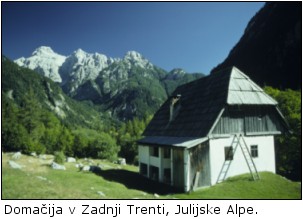Drama of the Diagonal,
Part Deux
Wednesday's entry The Turning discussed a work by Roger Cooke. Cooke presents a
"fanciful story (based on Plato's dialogue Meno)."
The History of Mathematics is the title of the Cooke book.
Associated Press thought for today:
"History is not, of course, a cookbook offering pretested recipes. It
teaches by analogy, not by maxims. It can illuminate the consequences
of actions in comparable situations, yet each generation must discover
for itself what situations are in fact comparable."
— Henry Kissinger (whose birthday is today)
For Henry Kissinger on his birthday:
a link to
Geometry for Jews.
This link suggests a search for material
on the art of Sol LeWitt, which leads to
an article by Barry Cipra,
The "Sol LeWitt" Puzzle:
A Problem in 16 Squares (ps),
a discussion of a 4x4 array
of square linear designs.
Cipra says that
"If you like, there are three
symmetry groups
lurking within the LeWitt puzzle: the rotation/reflection group
of order 8, a toroidal group of order 16, and an 'existential'* group
of order 16. The first group is the most obvious. The
third, once you see it, is also obvious."
* Jean-Paul Sartre,
Being and Nothingness,
Philosophical Library, 1956
[reference by Cipra]
For another famous group lurking near, if not within, a 4x4 array, click on Kissinger's birthday link above.
Kissinger's remark (above) on analogy suggests the following analogy to the previous entry's (Drama of the Diagonal) figure:

Logos Alogos II:
Horizon
This figure in turn, together with Cipra's reference to Sartre, suggests the following excerpts (via Amazon.com)--
From Sartre's Being and Nothingness, translated by Hazel E. Barnes, 1993 Washington Square Press reprint edition:
| 1. |
on Page 51: |
| "He makes himself known to himself from the other side of the world and he looks from the horizon toward himself to recover his inner being. Man is 'a being of distances.'" |
| 2. |
on Page 154: |
"...
impossible, for the for-itself attained by the realization of the
Possible will make itself be as for-itself--that is, with another horizon of possibilities. Hence the constant disappointment which accompanies repletion, the famous: 'Is it only this?'...." |
| 3. |
on Page 155: |
"...
end of the desires. But the possible repletion appears as a
non-positional correlate of the non-thetic self-consciousness on the horizon of the glass-in-the-midst-of-the-world." |
| 4. |
on Page 158: |
| "... it is in time that my possibilities appear on the horizon of the world which they make mine. If, then, human reality is itself apprehended as temporal...." |
| 5. |
on Page 180: |
"...
else time is an illusion and chronology disguises a strictly logical
order of deducibility. If the future is pre-outlined on the
horizon of the world, this can be only by a being which is its own future; that is, which is to come...." |
| 6. |
on Page 186: |
| "... It appears on the horizon to announce to me what I am from the standpoint of what I shall be." |
| 7. |
on Page 332: |
| "... the boat or the yacht to be overtaken, and the entire world (spectators, performance, etc.) which is profiled on the horizon. It is on the common ground of this co-existence that the abrupt revelation of my 'being-unto-death'...." |
| 8. |
on Page 359: |
| "... eyes as objects which manifest the look. The Other can not even be the object aimed at emptily at the horizon of my being for the Other." |
| 9. |
on Page 392: |
"...
defending and against which he was leaning as against a wail, suddenly
opens fan-wise and becomes the foreground, the welcoming horizon toward which he is fleeing for refuge." |
| 10. |
on Page 502: |
| "... desires her in so far as this sleep appears on the ground of consciousness. Consciousness therefore remains always at the horizon of the desired body; it makes the meaning and the unity of the body." |
| 11. |
on Page 506: |
"...
itself body in order to appropriate the Other's body apprehended as an
organic totality in situation with consciousness on the horizon-- what then is the meaning of desire?" |
| 12. |
on Page 661: |
| "I was already outlining an interpretation of his reply; I transported myself already to the four corners of the horizon, ready to return from there to Pierre in order to understand him." |
| 13. |
on Page 754: |
"Thus to the extent that I appear to myself as creating objects by the sole relation of appropriation, these objects are myself.
The pen and the pipe, the clothing, the desk, the house-- are
myself. The totality of my possessions reflects the totality of
my being. I am what I have. It is I myself which I
touch in this cup, in this trinket. This mountain which I climb
is myself to the extent that I conquer it; and when I am at its summit,
which I have 'achieved' at the cost of this same effort, when I attain
this magnificent view of the valley and the surrounding peaks, then I
am the view; the panorama is myself dilated to the horizon, for it exists only through me, only for me." |
Illustration of the
last horizon remark:


From CIPRA – Slovenia,
the Institute for the
Protection of the Alps
|
For more on the horizon, being, and nothingness, see






















Recent Comments